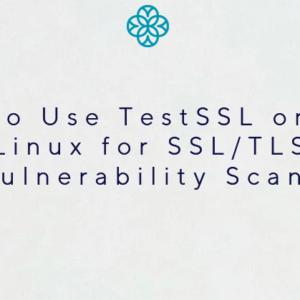
In today’s digital world, security is paramount, especially when it comes to web applications. With the growing number of cyber threats, it’s essential to have reliable tools that help detect vulnerabilities and ensure your web application is secure. One such... Read more

In today’s digital age, ensuring the security of web applications is paramount, especially when sensitive information such as passwords, credit card details, or personal data is being exchanged. One of the key components in safeguarding these communications is SSL/TLS (Secure... Read more

Introduction to SSL/TLS Testing Tools SSL (Secure Sockets Layer) and TLS (Transport Layer Security) protocols are fundamental for securing data transmitted over the internet. For website owners, network administrators, and security professionals, it is essential to test SSL/TLS configurations regularly... Read more

In the ever-evolving landscape of cybersecurity, the need for robust tools that can help in auditing web applications is paramount. One such tool is DIRB, a powerful web content scanner designed to uncover existing and hidden web objects. This article... Read more

In the world of web application security, the OWASP Zed Attack Proxy (ZAP) stands out as one of the most versatile and user-friendly tools available. This open-source security scanner is an essential resource for both beginners and experienced professionals in... Read more

SQL Injection (SQLi) vulnerabilities represent one of the most significant threats to web applications today. By exploiting these vulnerabilities, attackers can gain unauthorized access to databases, allowing them to view, insert, delete, or modify records. This article will delve into... Read more

Website footprinting is a crucial phase in the information-gathering process of cybersecurity. It involves collecting as much data as possible about a target website to understand its structure, technologies in use, and potential vulnerabilities. This process is fundamental for attackers... Read more


